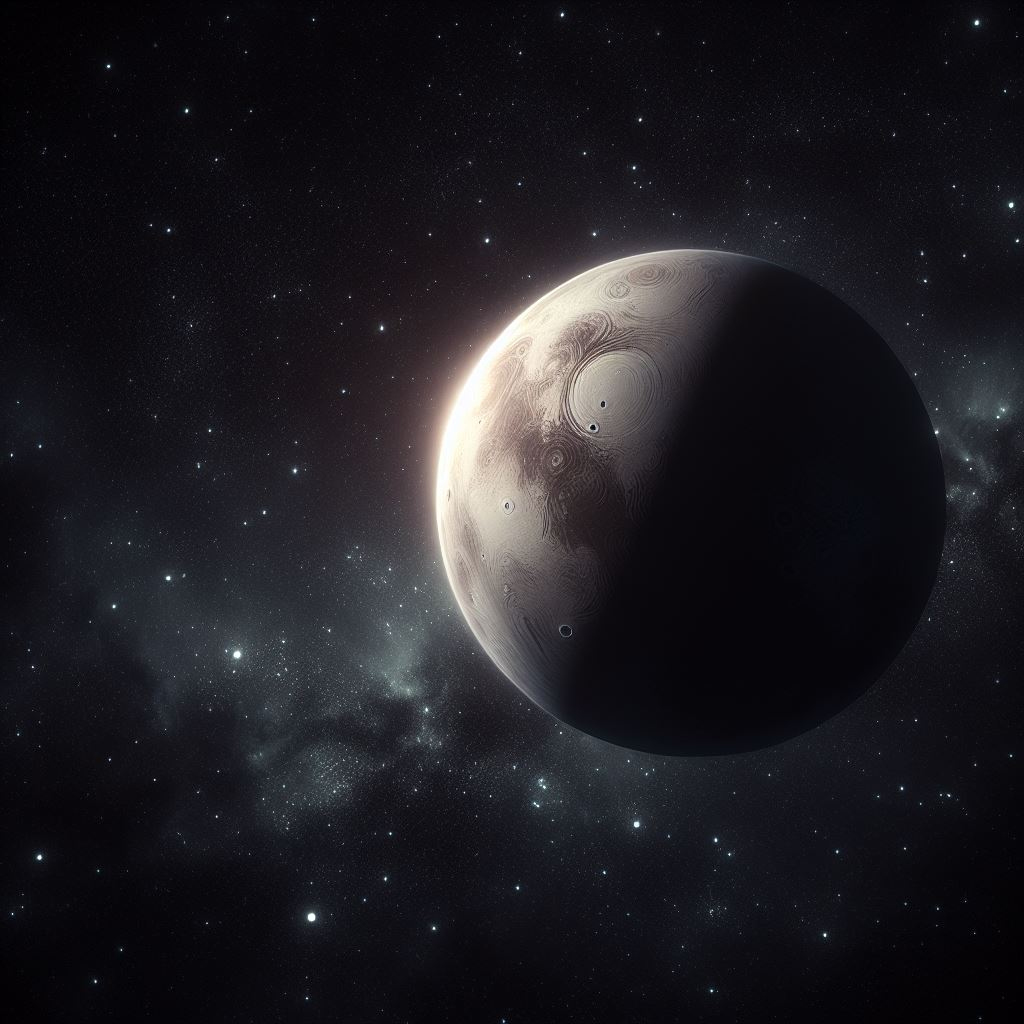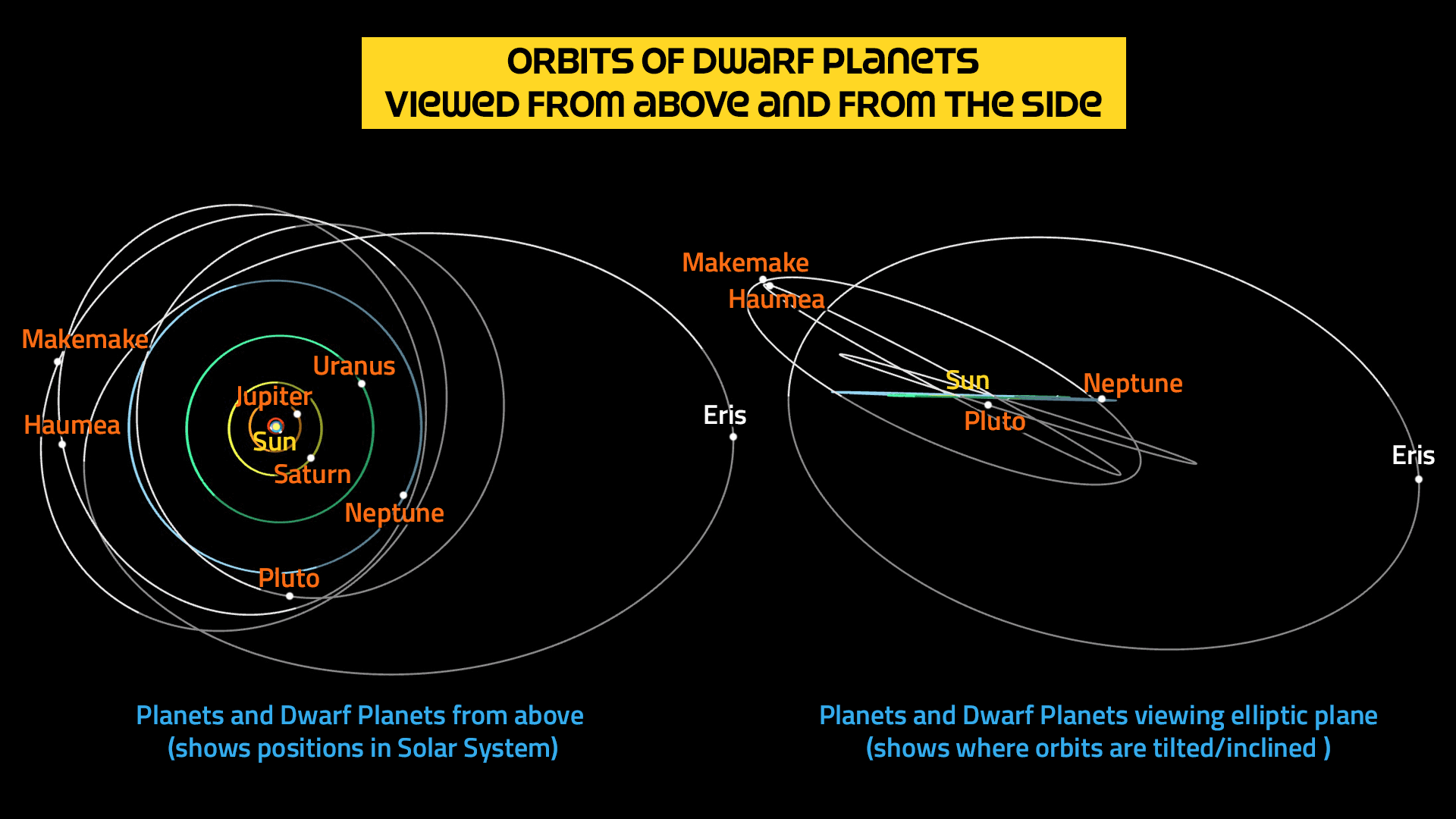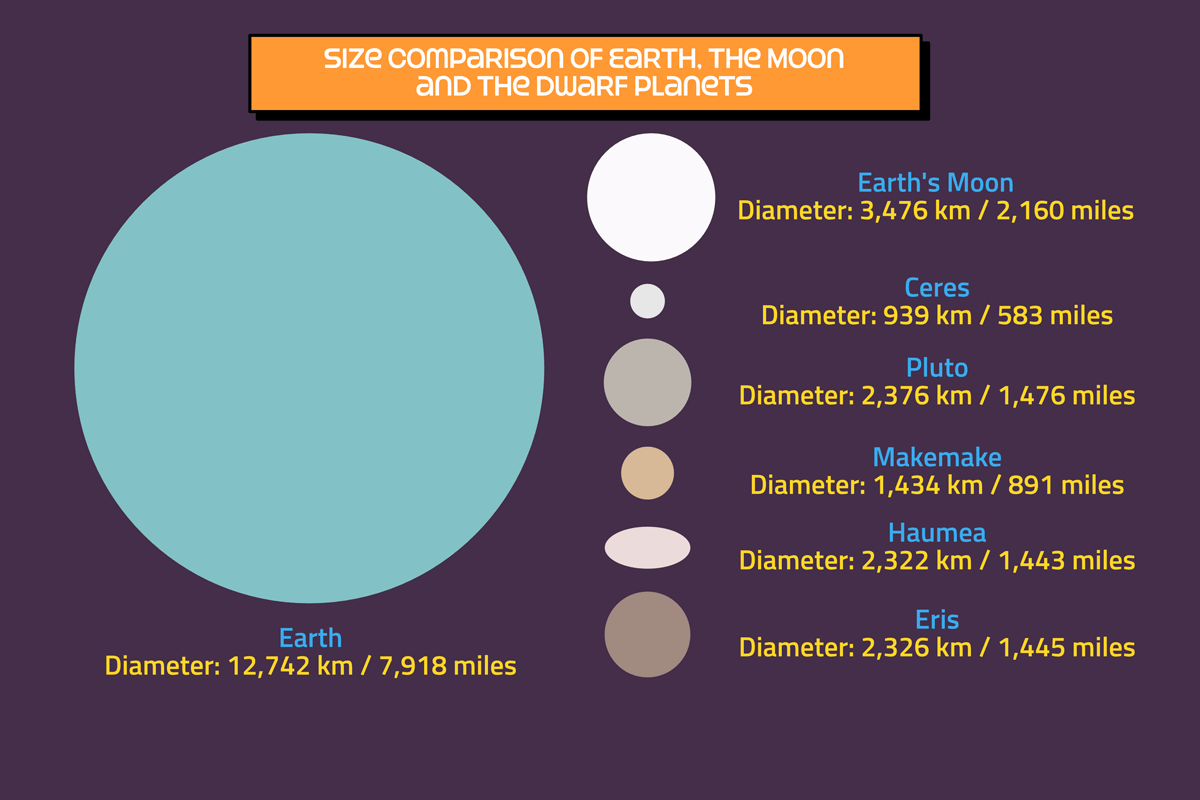Welcome to Eris!
Eris, named after the Greek goddess of discord, is the second largest dwarf planet in the solar system, residing in the scattered disc region beyond Neptune. Discovered in 2005, its detection triggered a heated debate amongst scientists and astronomers about the definition of a planet, ultimately leading to the creation of the dwarf planet category and the reclassification of Pluto. This distant, icy world orbits the Sun every 557 years and is kept company by its solitary moon, Dysnomia.
 AI generated image of Eris, showing a representation of the dwarf planet's possible appearance based on observations
AI generated image of Eris, showing a representation of the dwarf planet's possible appearance based on observations
6,308,158,392 miles
67.86 A.U.
1,445 miles
-359 °F to -405 °F
Eris has a highly elliptical and inclined orbit that takes it far beyond the Kuiper Belt, into a region known as the scattered disk. This eccentric path brings Eris as close as 5.7 billion kilometres (3.5 billion miles) from the Sun at its perihelion and as distant as 14.6 billion kilometres (9.1 billion miles) at its aphelion. The highly inclined orbit of Eris makes its movement through the solar system quite different from the major planets as it goes under and over the plane of their orbits. It takes about 557 years for Eris to complete one orbit around the Sun.

Eris has a diameter of approximately 2,326 kilometers (1,445 miles), making it slightly smaller than Pluto but still one of the largest known dwarf planets in the Solar System. Despite being smaller, Eris is more dense than Pluto, suggesting it has a higher composition of rock relative to ice. This compact size combined with its substantial mass means Eris has a higher gravitational pull for its size. The similar size of Eris and Pluto was a key factor in the debate over what constitutes a planet, leading to the redefinition of the term "dwarf planet" by the International Astronomical Union.

Eris was spotted for the first time on 5th January 2005 by a team of astronomers led by Mike Brown at Palomar Observatory in California. This was only a few days after the team had discovered the object that later became known as the dwarf planet Haumea. On something of a roll, they found another future dwarf planet, Makemake, soon after. Eris stood out due to its brightness and size, and initial measurements suggested it might even be bigger than Pluto!
When it came time to decide how to classify Eris and the other similar discoveries, the International Astronomical Union (IAU) weren't too keen on classifying them as planets, even though they shared similar characteristics with Pluto, which, at the time, was still considered to be a planet. So, in 2006, they came up with a new label - dwarf planet. A dwarf planet is an object which orbits the Sun but hasn't cleared its orbital path of other objects. The meant that not only did Eris get this tag, but Pluto was stripped of its status of a planet too. So, if you're still upset about Pluto no longer being a planet, you can blame Eris for it!
Before getting its official name, Eris was nicknamed "Xena" by its discoverers, after the main character from the television show Xena: Warrior Princess. The name stuck until the IAU went with Eris, the Greek goddess of discord, which is kind of fitting giving all the chaos it kicked off. Eris' moon Dysnomia, was initially nicknamed Gabrielle, friend and companion of Xena, the Warrior Princess. In Greek mythology, Dysnomia is the daughter of Eris and the goddess of lawlessness. Plus, fun fact: Lucy Lawless played Xena, which ties everything together with a neat little bow!





